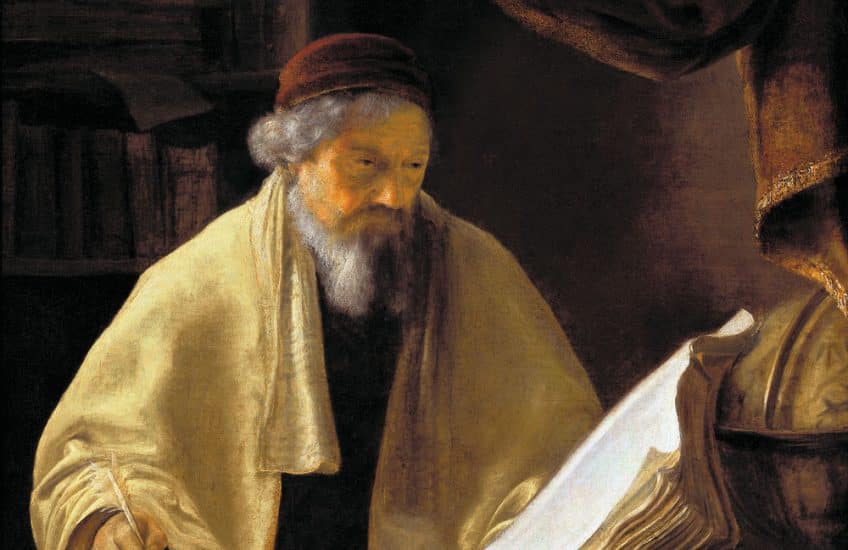
>> The 17th century saw increased literacy during a time of economic prosperity within the Dutch Republic. Books and the scholars that wrote them were an important element of society and, thus, significant enough to document in art. Godfrey Kneller painted several scholars and literary figures over the course of his career. This painting is emblematic of the interest in scholarly figures that caught the imagination of his contemporaries, and of Queen’s History Professor and Principal Emeritus Daniel Woolf, who provides some insights into the subject and historical context of the work.
>> Scholars, philosophers and scientists or natural philosophers, as they were known then, were pretty much the rock stars of the late 17th and early 18th century. Particularly in a place like the Netherlands, and elsewhere, obviously in England, but they made excellent subjects for study partly because, for the very first time in Europe, people who were reading works by scholars, historians, literary figures, actually had a curiosity as to what they looked like. Well, I particularly like this particular portrait because, from the point of view of somebody who is actually a historian of scholarship and historical writing and literature in the period, it has just about everything one could want. It’s got a lovely collection of rare books that we do not know what they were. But the portrait of a scholar is, I think, a very, very good and detailed portrait of a scholar actually at work and comparing that to, say, some earlier portrait of scholars, for example the classic medieval pictures of St. Jerome. It’s a much more lively portrait. You can almost see this particular scholar with his pen thinking about what it is he’s actually going to take from the book that he is reading and transcribe into his own book. I find the depiction of the scholar himself quite interesting. We don’t know who it was. It’s a fairly typical pose, but I find interesting the cap and particularly the shawl, while such garments were not uncommon in [inaudible] studies of the day, suggests to me that this might well have been a Jewish scholar being depicted. The iconography is very interesting. One of the most interesting things is what is not there. The books in the background, which are shelved by their fore-edge which is pretty common in the era, are not discernible as to subject or title so Kneller was obviously not concerned to depict particular books or particular branches of knowledge rather than simply to create a mise-en-scene of knowledge and scholarship. It’s also much darker than the foreground, so your eye is instantly drawn to the scholar himself and to the other items that are in the foreground. The globe itself is an important piece, partly because in addition to being such a mecca for scholarship and philosophy and art, the Dutch Republic at this period of time was also among the earliest of imperial powers. So I think the globe probably signifies the outward looking aspect of the Republic, but it also signifies that whatever else the scholar is doing, writing from one book into his own notebook, he is somebody of probably the multiple disciplines of the period in an age when there really were not disciplines as we came to know them which really is something of the 19th and 20th century.